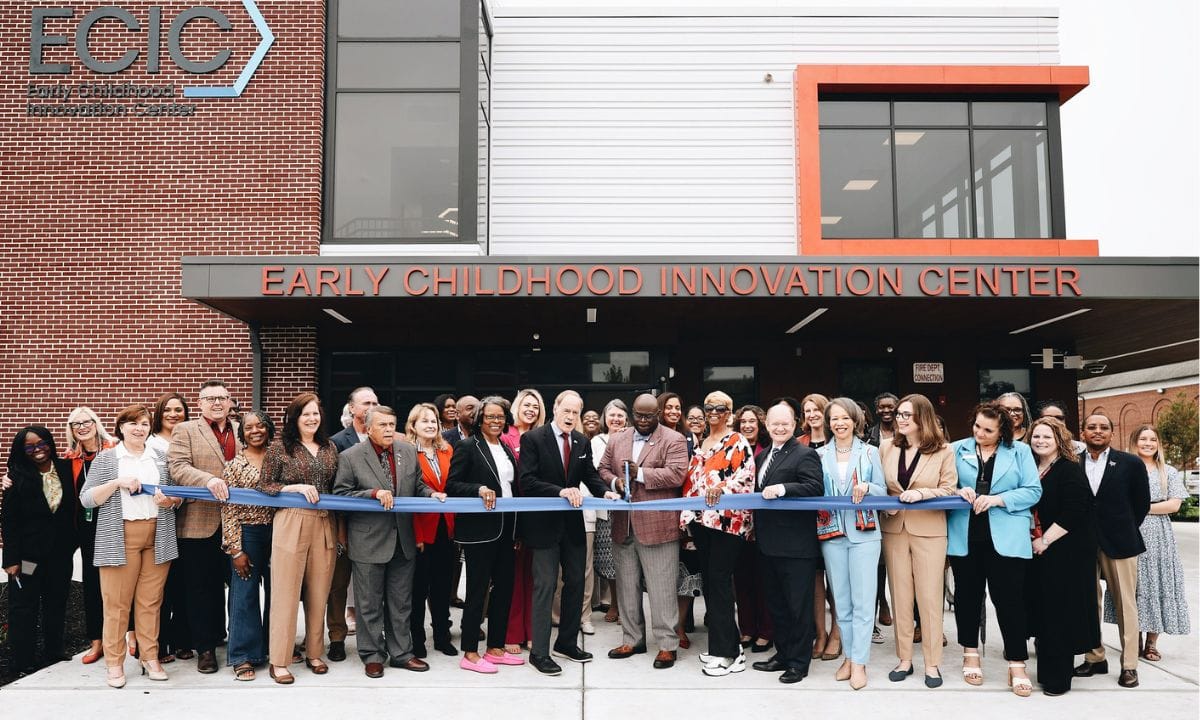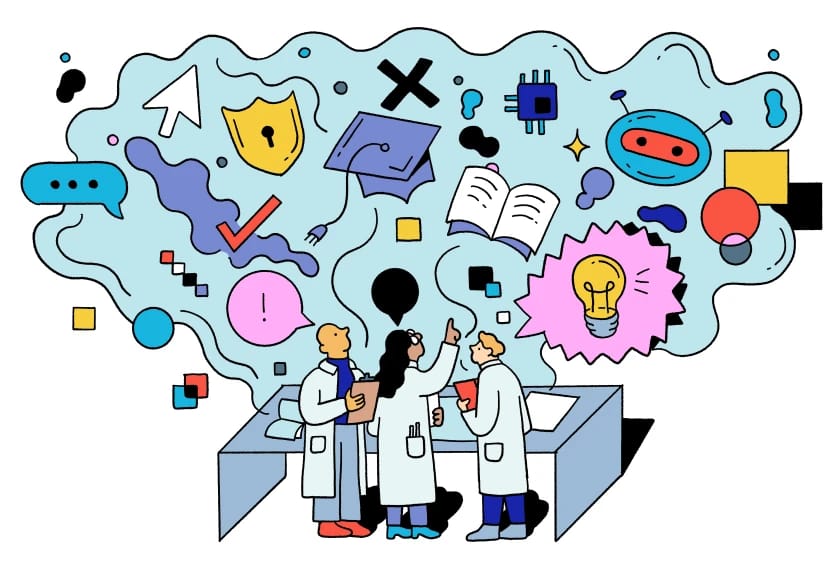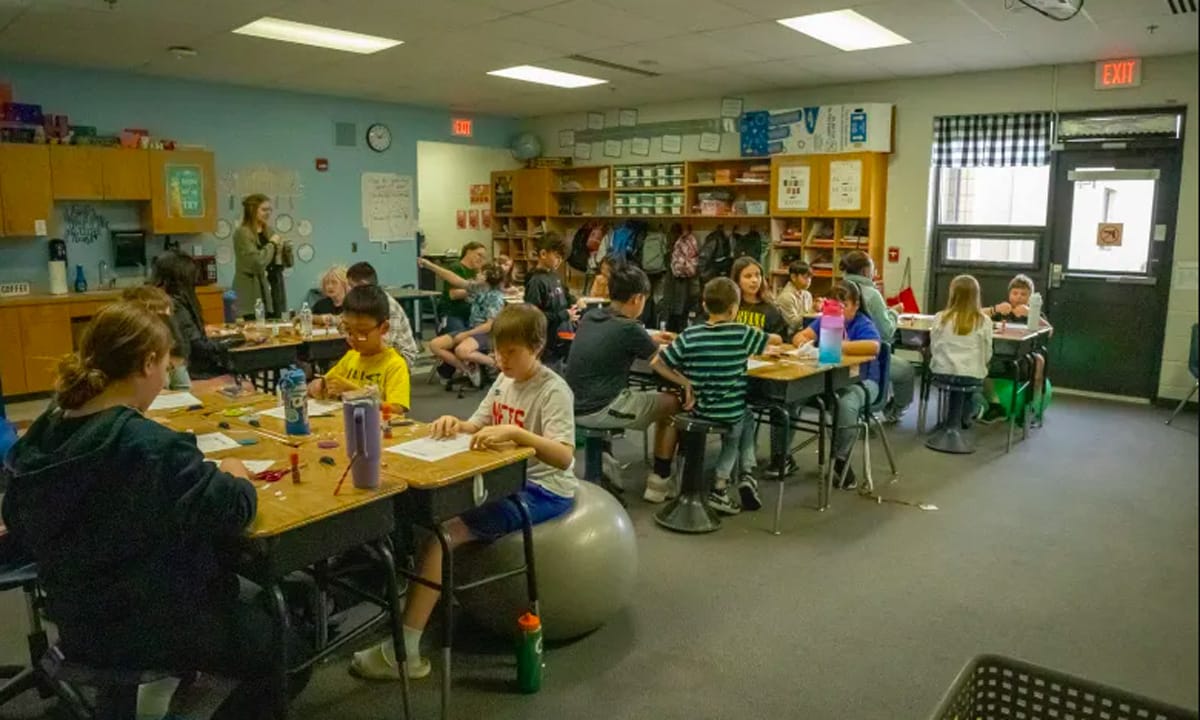- Playground Post
- Posts
- 🛝 Delaware Childhood Workforce, A Solution for Ed Tech Research, Kansan’s Special Education Students
🛝 Delaware Childhood Workforce, A Solution for Ed Tech Research, Kansan’s Special Education Students
What these mean for you
Welcome to Playground Post, a bi-weekly newsletter that keeps education innovators ahead of what's next.
Here's what we have on deck for today…
Delaware Cracked the Early Childhood Workforce Crisis With $30 Million and a Simple Idea
District Leaders Waste 1,000 Hours a Year Doing the Same Ed Tech Research. This Tool Wants to Fix That.
Kansas Added 12,000 Special Education Students in a Decade.
Delaware Cracked the Early Childhood Workforce Crisis With $30 Million and a Simple Idea

When a 2-year-old showed up at a Wilmington daycare, most staff assumed she couldn't speak. But Jazzie Tribbett, working toward her Child Development Associate credential through Delaware's new Early Childhood Innovation Center, recognized something others missed: the child had speech difficulties due to tongue thickness, not cognitive delays.
After Tribbett helped connect the family with speech therapy, the now-3-year-old can make herself understood. That's the kind of impact Delaware is betting $30 million on.
The Early Childhood Innovation Center launched in 2021 when Governor John Carney asked what they could do that was "big and bold" for young children. Center director Kimberly Krzanowski had been waiting for that question with a "folder full of hopes and dreams."
They removed every barrier that keeps early educators from pursuing advanced credentials. The center provides mentorship, financial support, career counseling, and laptops. Scholars get $500 stipends, plus bonuses that scale with achievement: $1,000 for six months of work, $5,000 for an associate degree, $10,000 for a bachelor's degree.
Almost 700 students have participated so far, with mentorship being the secret weapon. Tribbett's mentor, Phyllis Roland, visits her classroom twice monthly and meets with her in two reflective Zoom meetings.
Education innovators can build scalable versions of this model: mentorship platforms that pair early educators with experienced coaches, financial incentive systems that reward career advancement, and workforce pipeline programs that address critical shortages in early childhood education.
District Leaders Waste 1,000 Hours a Year Doing the Same Ed Tech Research. This Tool Wants to Fix That.

School districts access thousands of education technology products every year, and vetting each one for safety, usability, and accessibility can take hundreds of staff hours. But the problem is that every district is doing identical work that neighboring systems have already completed.
"There isn't really a 'Wirecutter' version of [education technology] that exists," says Tal Havivi, director of R&D at ISTE+ASCD. About 80% of a typical product evaluation looks identical from district to district, while only 20% focuses on whether a tool works with local curriculum and context.
Enter the EdTech Index, a collaboration between ISTE+ASCD, Digital Promise, CAST, and 1EdTech. The platform creates a one-stop resource where educators can quickly see which products have been examined and recommended by reputable, independent reviewers. For example, CAST evaluates tools for accessibility, while other partners focus on privacy and curriculum alignment.
Four states - Indiana, North Carolina, Utah, and Virginia - are piloting the index, and four major management platforms (Class Link, Clever, Lightspeed, and SchoolDay) will embed the information directly into their systems.
Complementary solutions can support the effort, including automated vetting platforms, district collaboration networks for sharing evaluation results, and strategic procurement tools that help schools move from impulse buying to problem-solving.
Kansas Added 12,000 Special Education Students in a Decade.

Kansas public schools now serve 82,000 special education students, 12,000 more than a decade ago. That might not sound massive in a state with 500,000 students, but it's creating a perfect storm of teacher burnout and staffing shortages.
"I understand that it might sound like a broken record," says Ryan Alliman from Wichita Public Schools. "I do think burnout is a thing with our teachers."
Districts are trying to solve the problem by hiring contractors, offering additional pay, and working with universities to beef up recruiting. Emporia State University is rolling out accelerated courses to get teachers into the field faster.
But there's a catch: special education certification takes about two years of additional education. Even if more education majors express interest in special education, filling those gaps means leaving shortages in general education classrooms.
Education innovators can help by addresses the root causes and utilizing new technologies to support teacher training and certification.
We'll be back with another edition on Tuesday. See you then!
To stay up-to-date on all things education innovation, visit us at playgroundpost.com.
What did you think of today’s edition? |